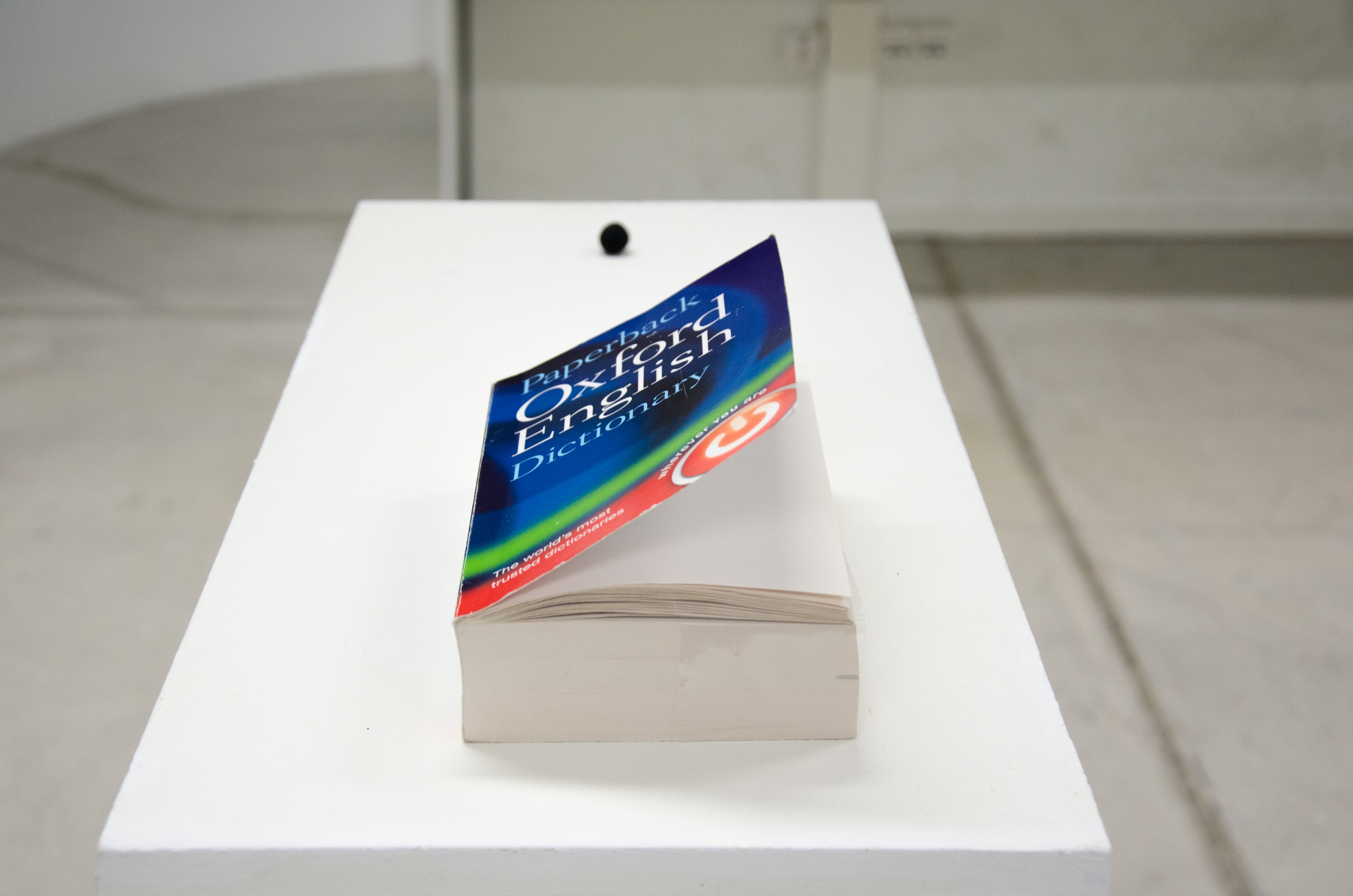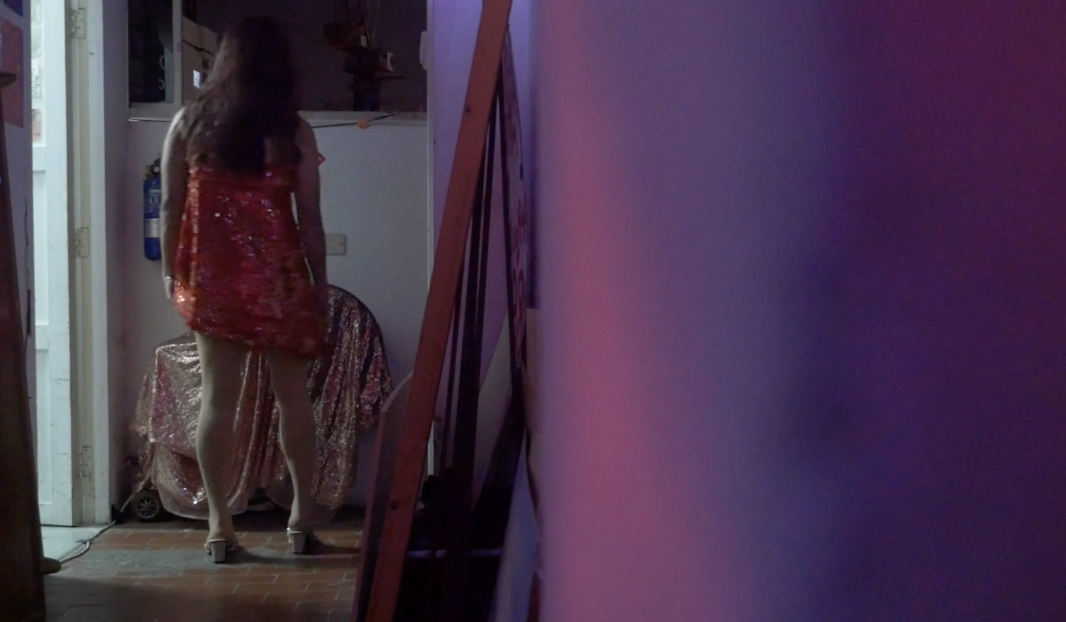Stacey Chan
︎︎︎staceychan.com
Stacey CHAN Lok Heng (b.1995, Australia) receives her BA from the Academy of Visual Arts at Hong Kong Baptist University in 2017. Chan’s practice often involves conceptual process and uses everyday objects such as pharmaceuticals as medium. Her drawing, sculpture and installation works present the visual form of emptiness and nothingness in creating the psychological dialogue between viewers and objects.
Long Been Covered (2018)
Dictionary
13 x 4.5 x 19.5cm
all positive words erased from dictionary
Our society’s elimination of negativity has brought to an extreme in which all negative emotions and behaviours are labelled as an abnormality to be isolated or eliminated from the society. Through erasing all positive words from a dictionary, I present the emotions that had long been hidden in our deepest selves.
Dictionary
13 x 4.5 x 19.5cm
all positive words erased from dictionary
Our society’s elimination of negativity has brought to an extreme in which all negative emotions and behaviours are labelled as an abnormality to be isolated or eliminated from the society. Through erasing all positive words from a dictionary, I present the emotions that had long been hidden in our deepest selves.
An Absolute Positivity (2018)
Eraser shavings
Ø 1.5cm
A formation of eraser shavings by erasing positive words from a dictionary
A sphere is formed by eraser shavings collected from erasing all positive words from a dictionary. This process responds to the society pursue of absolute positivity and the elimination of all negativity in their ownselves and the society.
Eraser shavings
Ø 1.5cm
A formation of eraser shavings by erasing positive words from a dictionary
A sphere is formed by eraser shavings collected from erasing all positive words from a dictionary. This process responds to the society pursue of absolute positivity and the elimination of all negativity in their ownselves and the society.




Wai Lau 劉衛
︎︎︎ wai-lau.com
Born in Hong Kong, Wai currently lives and works in New York and Hong Kong. Her work utilizes photography, video, drawing and installation exploring the multilateral constructions of identity in relation to race, gender and the notion of belonging. She attempts to investigate how history, fiction, personal memory and virtuality collided in the process of identity formation through personal and historical archives, cinematic imagery, popular culture and digital media.
劉氏出生於香港,目前工作和生活於紐約和香港。她的作品透過攝影、錄像、繪畫和裝置探索有關於種族、性別和歸屬的概念在身份構成當中的多重結構。她試圖通過個人及歷史檔案、電影圖像、流行文化和數碼媒體來探索歷史、虛構敘事、個人記憶和虛擬性如何在身份凝塑的過程中互相碰撞並產生影響。
劉氏出生於香港,目前工作和生活於紐約和香港。她的作品透過攝影、錄像、繪畫和裝置探索有關於種族、性別和歸屬的概念在身份構成當中的多重結構。她試圖通過個人及歷史檔案、電影圖像、流行文化和數碼媒體來探索歷史、虛構敘事、個人記憶和虛擬性如何在身份凝塑的過程中互相碰撞並產生影響。
I am invincible...on the screen/ False motion tracking (2019/2020)
2-channel video, color, sound
03’13”
03’13”
I am invincible...on the screen/ False motion tracking
The screen on the left consists of still images extracted from eleven Hollywood movies and American TV series produced from the late 1930s to the late 1980s, in which they centered around the portrayals of characters with Chinese descent, also including stories being filmed in Hong Kong. I use a mobile application that has synthetic media technology to convert the characters from the still images and rewrite their lines.
The screen on the right is a character which I perform, named as the “Pre-CGI body”. The body which has dressed in a tight suit with a lot of motion tracking data points attached is widely seen in the pre-productions of commercials and movies where their actions and performances are used as a “material” for post-production to generate computer graphics or 3D animations on top of them. In spite of that, this “Pre-CGI body” I perform in the video is attached with fake tracking data points which do not function as it might suggest. This video was filmed after the one on the left was made. The body is re-enacting what has been created on the screen at the left, and they is not altering the characters on the other screen as it might appear to be from the
setting.
Ip Wai Lung is a meditation enthusiast who embraces impermanence, as conventional religious beliefs are static, yet the world is constantly in flux. He intervenes with life by mediation in an attempt to process all the impermanence, queerness, and ambiguity the world throws at him. Through art Ip stages meditation, he detaches and engages with the consciousness and unconscious. This constantly shifting of roles, modes, and discipline is the backbone of his art works. His works might be plain and dry at first glance, yet there is a never-ending restlessness bursting from the seams.
Karma Cycle
Lifting, pushing, shoving, & running for the perfect BMI and body shapes, these rituals of modern day masculinity building, while performs by a Qian Dan, portrayed by Ip for the first time in costume, a man who play the female lead in Chinese Opera, it becomes struggles on a multitude of levels. Beach ball spinning is beach ball stuck, trapped in this aimless browsing of ambiguity of the virtual space; unknowingly stuck in this mistful post-catastrophic utopia. Resembling protests against all dichotomies of gender, geographies, and contradictions among different eras. Karma is a Sanskrit term for “action” lead to inevitable results, both good and bad, that people experience in either this life or in reincarnation.
Lifting, pushing, shoving, & running for the perfect BMI and body shapes, these rituals of modern day masculinity building, while performs by a Qian Dan, portrayed by Ip for the first time in costume, a man who play the female lead in Chinese Opera, it becomes struggles on a multitude of levels. Beach ball spinning is beach ball stuck, trapped in this aimless browsing of ambiguity of the virtual space; unknowingly stuck in this mistful post-catastrophic utopia. Resembling protests against all dichotomies of gender, geographies, and contradictions among different eras. Karma is a Sanskrit term for “action” lead to inevitable results, both good and bad, that people experience in either this life or in reincarnation.
Moses Tan
Moses Tan presents works from his recent series, Memorial for Boogie Street (2018). Incorporating drawing, sculpture, audio and virtual reality, Tan’s suite of works seek to re-articulate often forgotten, repressed and censored queer histories of Singapore, especially of the communities and activities that centred around Bugis Street from the 1950s to the mid-1980s when the downtown area begun its transformation from a well-known (and well-frequented) site for cruising and transgender sex workers and their clients to what is today a haven for tourists with malls, markets and cultural institutions.

︎ Understanding the power of queer metaphor in the art of Moses Tan
Moses Tan (b. 1986, Singapore) is a Singapore-based artist whose work explores histories that intersect with queer theory and politics while looking at melancholia and shame as points of departure. Working with drawing, video and installation, his interest lies in the use of subtlety and codes in the articulation of narratives.
Moses Tan (b. 1986, Singapore) is a Singapore-based artist whose work explores histories that intersect with queer theory and politics while looking at melancholia and shame as points of departure. Working with drawing, video and installation, his interest lies in the use of subtlety and codes in the articulation of narratives.
Playing with ‘Boogie Street’, the title of a Leonard Cohen song that is said to have been inspired by the songwriter’s short stopover in Singapore in the early 1970s on the way back from Sydney as part of a world tour, Tan’s works are an elegy to an era that seemed more open – and paradoxically, compared to today – permissive of flaunting queerness ,while at the same time stand as metaphors for the relationship between the street and the inner lives and latent desires of its varying denizens.
![]()
Text by Pedro de Almeida

Andrew Luk
The artist will be producing a project specifically for the exhibtion in August.

Andrew Luk is a Hong Kong artist whose material-based practice of creating installations, sculptures, and images investigates how civilization regards itself in relation to nature by way of examining human projects as well as studying naturally occurring systems of entropy, anti-entropy, and preservation. Time, in regards to history, memory, and experience, is utilized as a medium; selectively enhancing and detracting value by reconfiguring both fictional and factual material histories and composing arrangements that mitigate the difference between the man-made and the naturally occurring. The aim is to draw connections between entities and discover new narratives.


